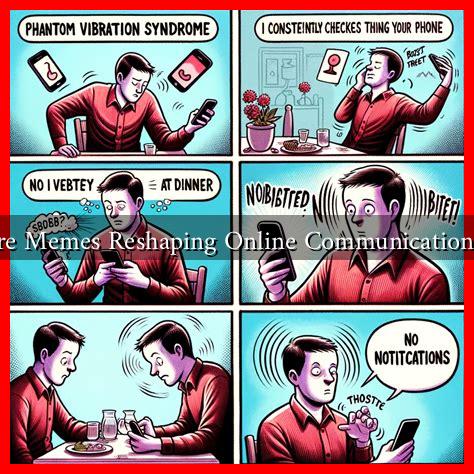-
Table of Contents
How Are Memes Reshaping Online Communication Norms
In the digital age, memes have emerged as a powerful form of communication, transcending language barriers and cultural differences. They are not just humorous images or videos; they are a new language that encapsulates complex ideas, emotions, and social commentary in a digestible format. This article explores how memes are reshaping online communication norms, influencing everything from social interactions to marketing strategies.
The Evolution of Memes
The term “meme” was coined by British evolutionary biologist Richard Dawkins in his 1976 book, “The Selfish Gene.” He described memes as units of cultural transmission, akin to genes in biological evolution. However, the modern interpretation of memes has evolved significantly, especially with the rise of the internet. Today, memes are primarily visual and often consist of images paired with text that convey humor, irony, or social critique.
Memes as a Language
Memes have developed into a unique form of language that allows users to communicate complex ideas succinctly. This new language is characterized by:
- Visual Communication: Memes often rely on images or videos, making them universally understandable, regardless of language.
- Intertextuality: Many memes reference popular culture, current events, or other memes, creating a rich tapestry of interconnected ideas.
- Emotional Resonance: Memes can evoke strong emotions, allowing users to express feelings like joy, frustration, or sarcasm in a relatable way.
For example, the “Distracted Boyfriend” meme has been used to illustrate various scenarios, from personal relationships to political commentary, showcasing how a single image can convey multiple meanings depending on the context.
Impact on Social Interactions
Memes have significantly altered the way people interact online. They serve as a social glue, fostering connections among users. Here are some ways memes influence social interactions:
- Shared Humor: Memes create a sense of community through shared humor, allowing users to bond over common experiences.
- Instant Communication: Memes can convey messages quickly, making them ideal for fast-paced online interactions.
- Social Commentary: Memes often address social issues, encouraging discussions and raising awareness about important topics.
For instance, during the COVID-19 pandemic, memes became a way for people to cope with the situation, sharing humor and solidarity through platforms like Twitter and Instagram.
Memes in Marketing and Branding
Businesses have recognized the potential of memes as a marketing tool. Brands are increasingly using memes to engage with younger audiences and create relatable content. Some key strategies include:
- Authenticity: Brands that use memes often appear more relatable and authentic, resonating with consumers.
- Virality: Memes have the potential to go viral, providing brands with extensive reach at a low cost.
- Engagement: Memes encourage user interaction, prompting shares, likes, and comments.
A notable example is the “Doge” meme, which was leveraged by various brands to create engaging content that appealed to the meme’s fanbase. Companies like Slim Jim and Netflix have successfully integrated memes into their marketing strategies, resulting in increased engagement and brand loyalty.
The Dark Side of Memes
While memes can foster community and humor, they also have a darker side. Misuse of memes can lead to:
- Disinformation: Memes can spread false information quickly, especially in political contexts.
- Cyberbullying: Memes can be weaponized to harass individuals or groups.
- Polarization: Memes can contribute to echo chambers, reinforcing existing beliefs and dividing communities.
The infamous “Pepe the Frog” meme illustrates this point, as it was co-opted by various extremist groups, leading to significant backlash against its original creator.
Conclusion
Memes are reshaping online communication norms by creating a new language that transcends traditional barriers. They facilitate social interactions, serve as effective marketing tools, and provide a platform for social commentary. However, the potential for misuse highlights the need for critical engagement with this form of communication. As memes continue to evolve, they will undoubtedly play a crucial role in shaping the future of online interactions.
For further reading on the impact of memes in digital culture, you can explore resources like Meme Generator and Know Your Meme.


